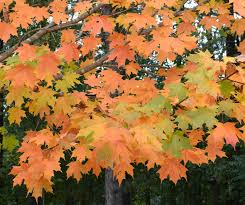
Be-a-Better-Gardener
Planting in the Fall? Sure!
By Thomas Christopher
Many gardeners are already retiring their spades and trowels to winter storage, but if you do that, you’ll miss the best planting season of the year. Although spring is considered the classic planting season for most vegetables and annuals, fall is best for planting woody plants – trees and shrubs – as well as container-grown perennials
That’s not just my opinion. It’s the considered judgment of an expert grower, a leading nurseryman whom I consulted.
Tim Flood is the president of McKay Nursery of Waterloo, Wisconsin, a firm that not only markets its plants throughout its home state, but also the Twin Cities in Minnesota and the Chicago Metro Area, as well as furnishing nursery stock to NatureHills.com, the nation’s largest online nursery. Waterloo, located in USDA Zone 5A-4B, presents Tim with winters every bit as challenging as our own here in the Northeast. Yet he still recommends fall as the best planting time for most nursery stock.
Tim explained to me that fall is such a good planting time because, although the air may be cool then, the soil is warm. The cooler air reduces the stress on the above-ground portion of the plant and slows its growth, while the warm soil encourages vigorous root growth. This root growth continues, he added, until the soil freezes. Mulch the new plantings well and, by insulating the soil, you extend this period of root growth. This root growth gives fall plantings a head-start the following spring. In fact, fall-planted trees and shrubs typically behave like established veterans in their first spring, flowering well and developing a normal amount of new growth.
Trees and shrubs transplanted in spring, by contrast, find the air warm but the soil still cold. That means the tops of the plants are encouraged to grow while the roots upon which they must draw are still dormant, which stresses the plants.
Fall planting is also easier on the gardener because keeping new plantings irrigated in that season of cooling, when the plants need less water, is easier than accomplishing the same thing in spring when the weather grows steadily hotter. This relates to another advantage of fall planting, which is that it gives the plant more time, an extra season of growth, to settle in before it faces the heat and drought stress of summer. The extra roots that the fall-planted tree, shrub, or perennial has made can make the difference between a plant that survives its first summer and one that doesn’t. Our current pattern of hot springs and early, dry summers exacerbates this effect.
As a gardener, I also like fall as a planting season for financial reasons: fall is a season of bargains at garden centers and nurseries. Many such businesses prefer not to keep their left-over stock over the winter and so offer it for sale at considerable mark-downs in the fall. Often, I find discounts of 25 percent or even more. And, according to Tim Flood, fall shoppers may also get the first crack at new introductions, plants that have been in production all year and are just entering the market for the first time.
Not all plants, it should be noted, are equal when it comes to fall planting. Conifers are amenable to planting at this season but prefer an earlier installation than their deciduous relatives. Get the evergreens into the ground as early as you can once the heat of summer is past. And broadleaved evergreens such as rhododendrons and hollies are exceptions to the fall planting rule, as they respond better to planting in spring.
Thomas Christopher is the co-author of “Garden Revolution” (Timber Press, 2016) and is a volunteer at Berkshire Botanical Garden. berkshirebotanical.org
Be-a-Better-Gardener is a community service of Berkshire Botanical Garden, one of the nation’s oldest botanical gardens in Stockbridge, MA. Its mission to provide knowledge of gardening and the environment through 25 display gardens and a diverse range of classes informs and inspires thousands of students and visitors on horticultural topics every year. Thomas Christopher is the co-author of Garden Revolution (Timber press, 2016) and is a volunteer at Berkshire Botanical Garden. berkshirebotanical.org.

